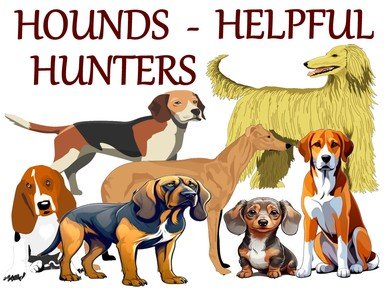
Hounds - Helpful Hunters Trivia Quiz
Hounds have a natural instinct to hunt prey and have been helping people with it for hundreds of years. Many are now pampered pets but still possess this innate ability. How much do you know of this dog group?
by Midget40.
Estimated time: 4 mins.
- Home
- »
- Quizzes
- »
- Animal Trivia
- »
- Dog Breeds
- »
- Hounds